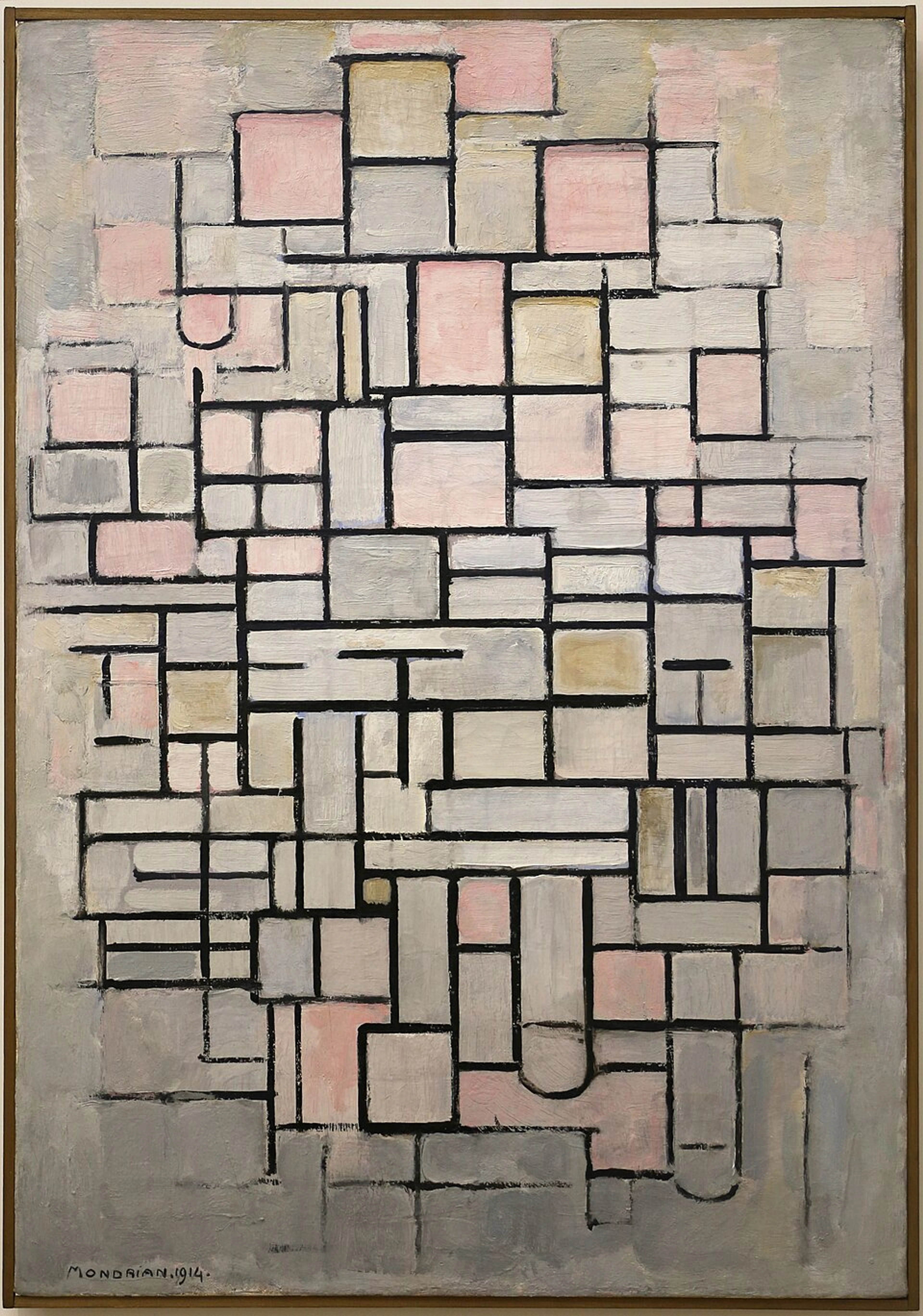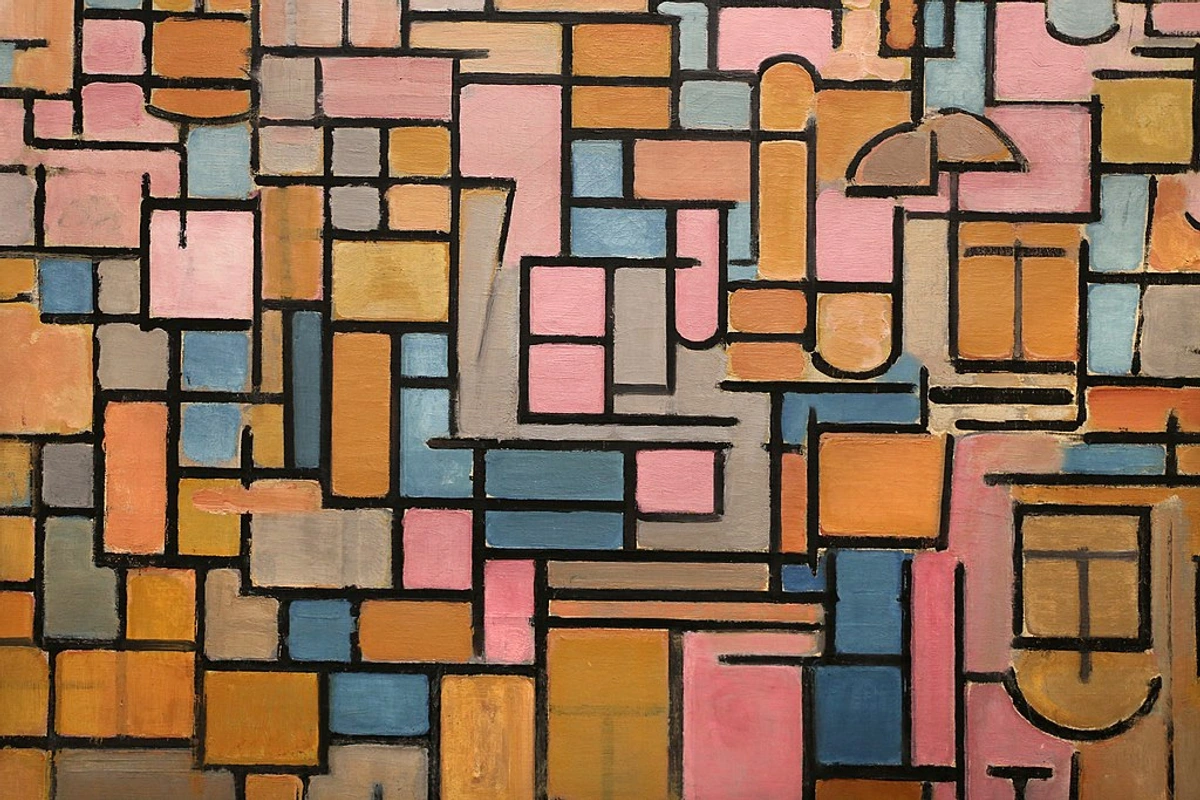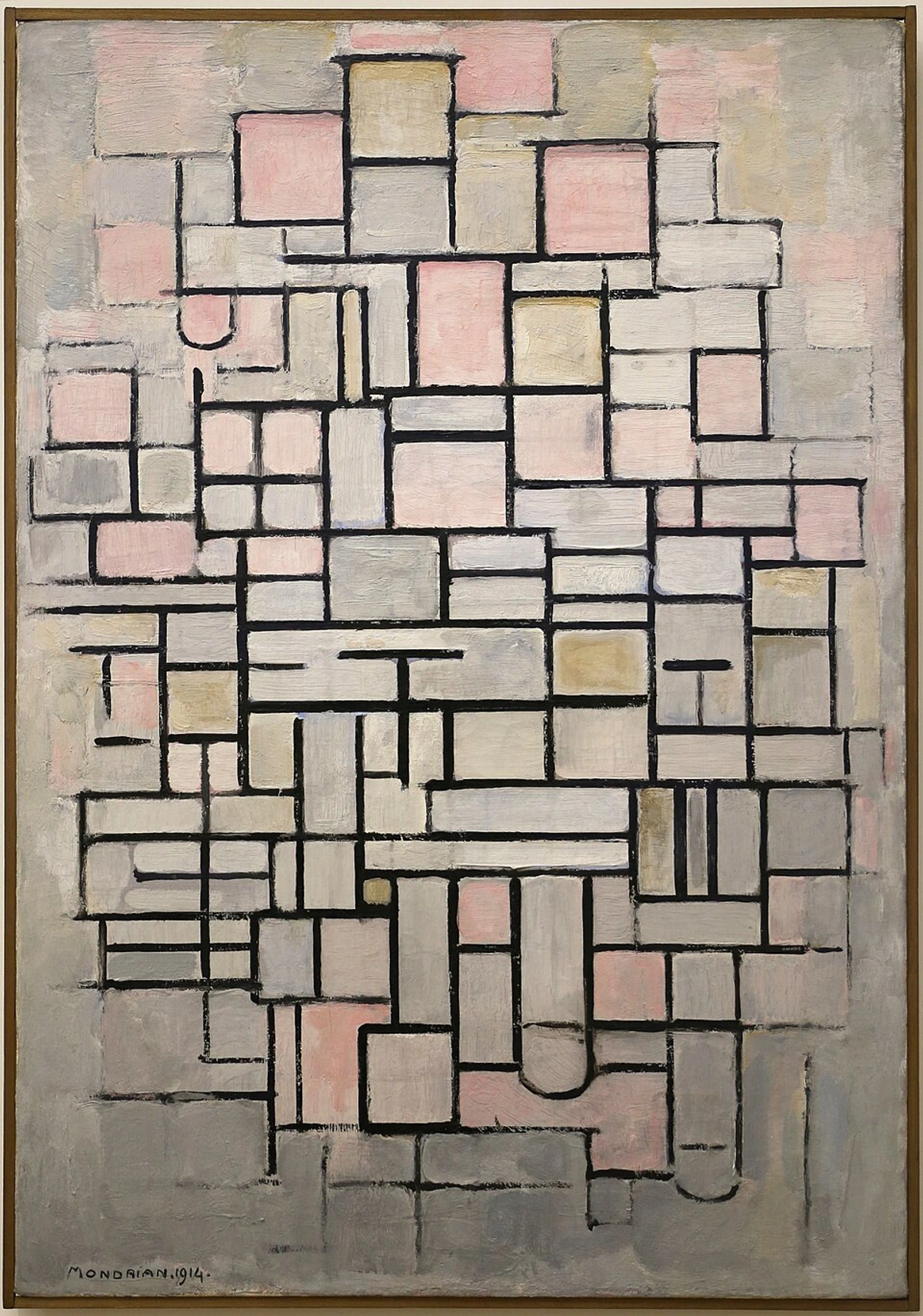
My Dialogue with De Stijl: Order, Chaos & Abstract Art Evolution
Explore my artistic journey through a dialogue with De Stijl's principles. Discover how structured order and organic chaos unite in abstract composition, inspiring balance and unique creative expression.
My Dialogue with De Stijl: Finding Order and Balance in Abstract Composition
You know, sometimes I look at the work of De Stijl artists – those stark, geometric compositions in primary colors – and I can't help but smile. It’s a bit like looking at a beautifully organized closet after wrestling with my own chaotic studio for hours. There’s an undeniable appeal to that kind of rigorous order, that absolute clarity. And while my own art often leans towards a more organic, free-flowing abstraction, my dialogue with De Stijl is a surprisingly deep one – precisely because we seem so different on the surface.
It’s not a conversation shouted across a crowded room; it’s more of a quiet, reflective chat over a cup of coffee. A ponderous, sometimes exasperated, internal debate about control versus chaos, structure versus spontaneity. And honestly, it’s a conversation that has shaped my understanding of what abstract art can be, and how I approach my own canvases.
The Allure of Austerity: My First Encounter with De Stijl
I remember first really diving into De Stijl, particularly Piet Mondrian’s work, and being struck by its almost monastic devotion to simplicity. Black lines, white spaces, and those quintessential primary colors: red, yellow, and blue. No fuss, no frills, just pure visual harmony. It felt like a grand pronouncement on universal order, a philosophical statement delivered in paint and canvas.
But De Stijl, or "The Style" in Dutch, was far more than just painting. It was a complete philosophical movement, emerging from the post-WWI desire for radical renewal and a new universal harmony. The artists, tired of individual expression and the chaos of the world, sought to redefine visual language with its radical simplicity, striving for a universal aesthetic that transcended personal emotion. While Mondrian's Neoplasticism pursued a static, universal harmony through strict horizontal and vertical lines, other key figures like Theo van Doesburg, a co-founder of the movement, explored Elementarism, introducing dynamic diagonal lines. He did this to challenge the perceived static nature of Mondrian's grids, believing diagonals introduced more dynamism and a truer reflection of universal energies. You can even see De Stijl's influence in the iconic Red and Blue Chair by Gerrit Rietveld, a striking example of applying those primary colors and geometric forms to practical design. It's funny how a group of artists in 's-Hertogenbosch and Leiden decided they were going to create universal harmony, isn't it? (Speaking of 's-Hertogenbosch, if you're ever in the area, my museum is worth a visit, though my art might be a little less... linear!)

Part of me, the part that occasionally wishes my socks would sort themselves by color, deeply appreciates that kind of rigid system. It's beautiful in its precision, a deliberate rejection of personal expression in favor of universal principles. It’s a fascinating chapter in the history of abstract art, offering a blueprint for a kind of rational beauty. But then, the other part of me, the one that thrives on a bit of glorious mess and unexpected discovery, sighs and wonders if I could ever live within those lines.
Finding My Own Equilibrium: Beyond the Rigid Grid
So, if De Stijl sought harmony through strict geometry, how does a painter like me, who revels in organic abstraction, find common ground? De Stijl’s underlying pursuit was a harmonious balance, a dynamic equilibrium achieved through the careful arrangement of simplified forms. And here's where our dialogue truly begins. While their approach was strict geometry, my own journey in abstract composition is also a relentless search for balance. It might not look like perfectly perpendicular lines and pure squares, but the feeling of a composition being just right—where every element, every splash of color, every whispered line, feels essential and in perfect, dynamic harmony. It's not about strict angles, but about the invisible gravitational pull between shapes and the emotional weight of colors.
My "organic, free-flowing abstraction" is, at its heart, a controlled chaos. Imagine a wild garden, but one where every plant, every flower, is perfectly positioned to complement its neighbor, even if it looks effortlessly natural. For me, it means starting with intuition, letting the brush move freely, creating layers and textures. But then comes the editor, the part of my brain that has had that quiet coffee chat with De Stijl. This is where De Stijl's call for order whispers, even when my initial marks are wild; it's the push to pull the chaos into coherence.
The Unseen Structure: My Inner Grid
Even without drawing black lines, I find myself thinking about invisible structures. It's less a rigid grid and more a subconscious framework—a sense of weight and counterbalance. When I'm working on a piece, like my "Forest Whisper" series (which embodies fluid forms with subtle underlying structure), I'm constantly shifting colors and forms, asking: Does this corner feel too heavy? Does this sweep of color need something to pull it back? It's like an internal plumb line, ensuring that even the wildest gestural marks contribute to an overall sense of stability. It’s the deep understanding, a kind of muscle memory, that a splash of vibrant yellow here needs a grounding blue there, not because a rule says so, but because the painting itself demands it. It's my personal quest for universal principles within my own expressive art elements.
![]()
The Language of Layers: Balancing Weight and Flow
My process often involves many layers. Each layer adds depth, but also visual weight. Balancing this weight is crucial. I use translucency and opacity, bold strokes and delicate washes, to create a sense of push and pull. A vibrant emotional color might sing loudly, but it needs a quiet, almost empty space beside it to truly resonate. It’s a dance between intentional marks and happy accidents, always with an eye on the overall equilibrium. Sometimes, a layer just refuses to cooperate. I remember one time, I’d laid down a beautiful, translucent wash of teal, hoping for a subtle depth, but it just sat there, flat and lifeless. No matter what I did, it felt like it was absorbing light rather than reflecting it. After a lot of frustration, I ended up scraping most of it off, revealing the layers beneath, and then added a single, opaque stroke of warm grey. Suddenly, the entire composition breathed, finding its balance in the contrast. It taught me that sometimes, the most harmonious solution is subtraction, not addition.
Embracing Imperfection: The Beautiful Accident
Where De Stijl sought to eliminate the hand of the artist, I embrace it. My balance isn't sterile; it's dynamic, alive with imperfections. A drip, a smudge, a texture that wasn't planned—these become part of the negotiation. They add character and story. And let's be honest, sometimes those "happy accidents" are just me trying to salvage a mistake and miraculously making it work. The dialogue with De Stijl here is less about emulation and more about challenge: Can I find universal harmony within the unique and the flawed? Can pure balance exist in an organic form, just as it does in a perfect square? The answer, for me, is a resounding yes, and it’s what makes collecting abstract art such a personal journey. My journey as an artist is detailed further on my timeline.
More Than Just Lines: A Dialogue's Enduring Echo
My conversation with De Stijl isn't over. It continues every time I stand before a canvas, debating the next move. Its influence extends far beyond fine art; you can see echoes of its radical simplicity in modern graphic design, minimalist architecture, and even product aesthetics today. It’s a constant reminder that even in the most free-form expression, there’s an underlying human need for order, for resolution, for a moment where everything just works. Perhaps that's the true universal principle De Stijl tapped into, one that transcends their specific aesthetic.
So, how do you find your own balance between structure and spontaneity in your life or your creative pursuits? Is your closet a Mondrian or a Jackson Pollock? It’s a fun question to ponder, and whether you're an artist or simply someone trying to make sense of the beautiful chaos around you, the principles of seeking equilibrium—even if your "lines" are invisible—are universally applicable.
If this conversation resonates with you, and you're looking for art that embodies this dynamic balance, consider exploring my original paintings and prints. Every piece is a culmination of this ongoing dialogue, a moment of resolved chaos, waiting to find its place in your world.





